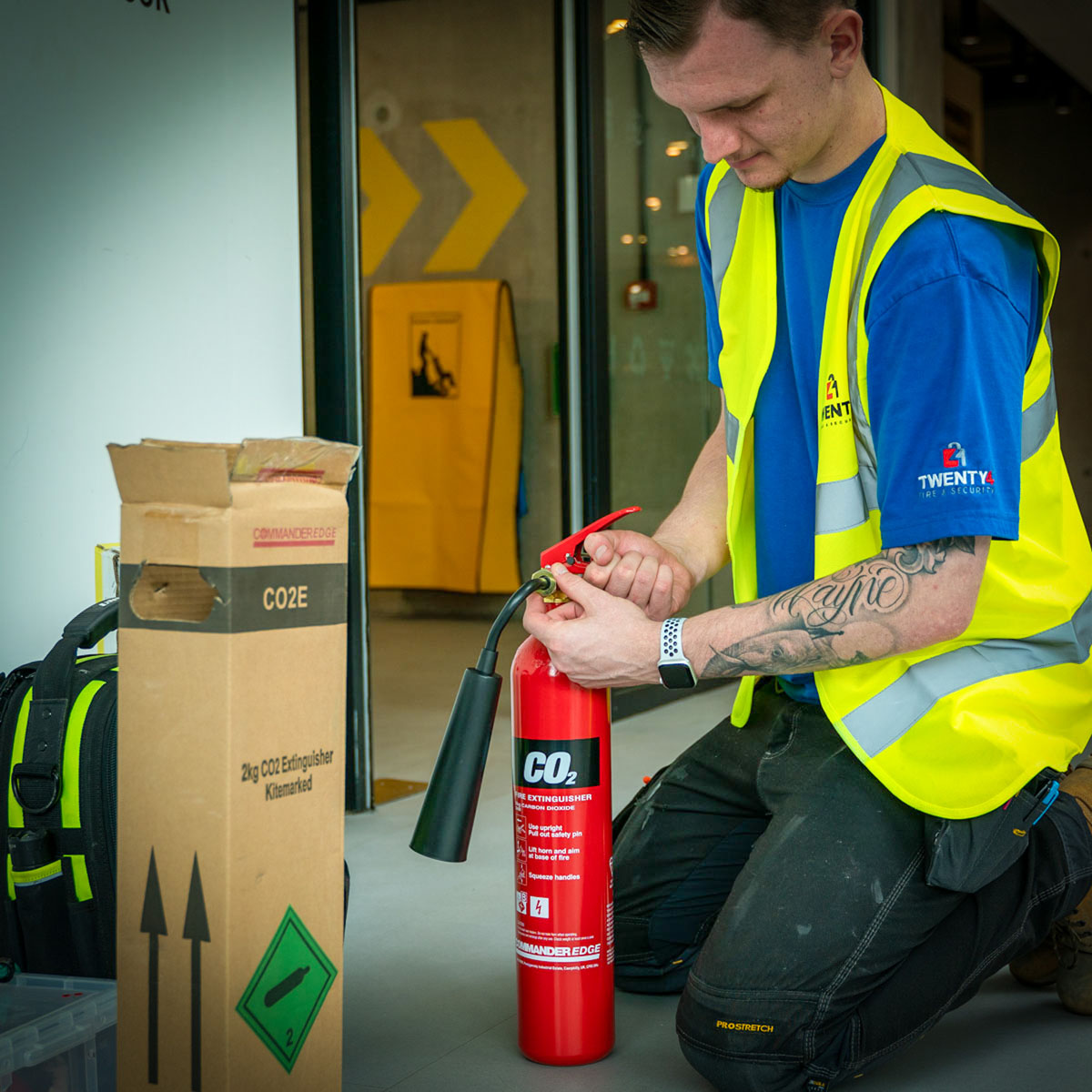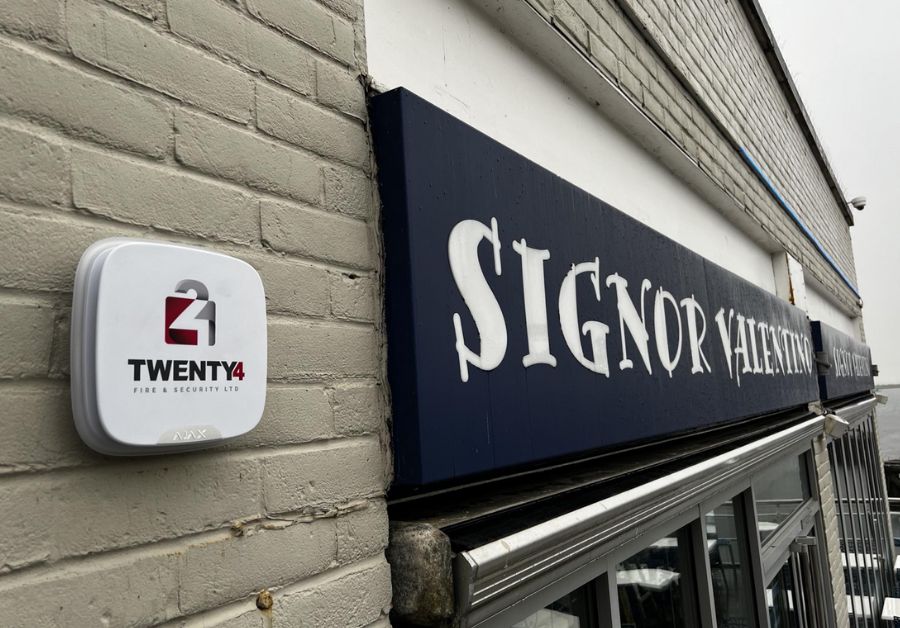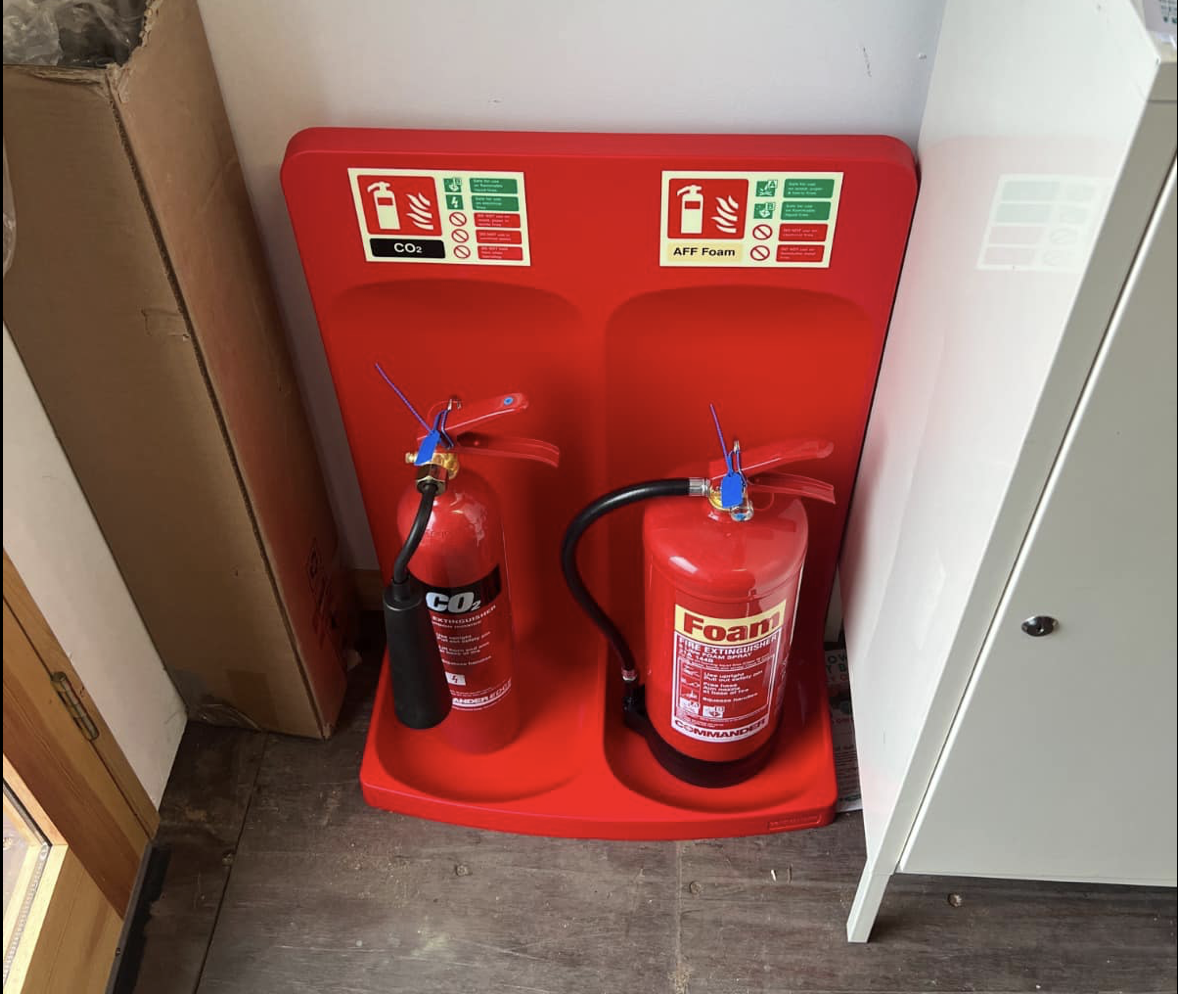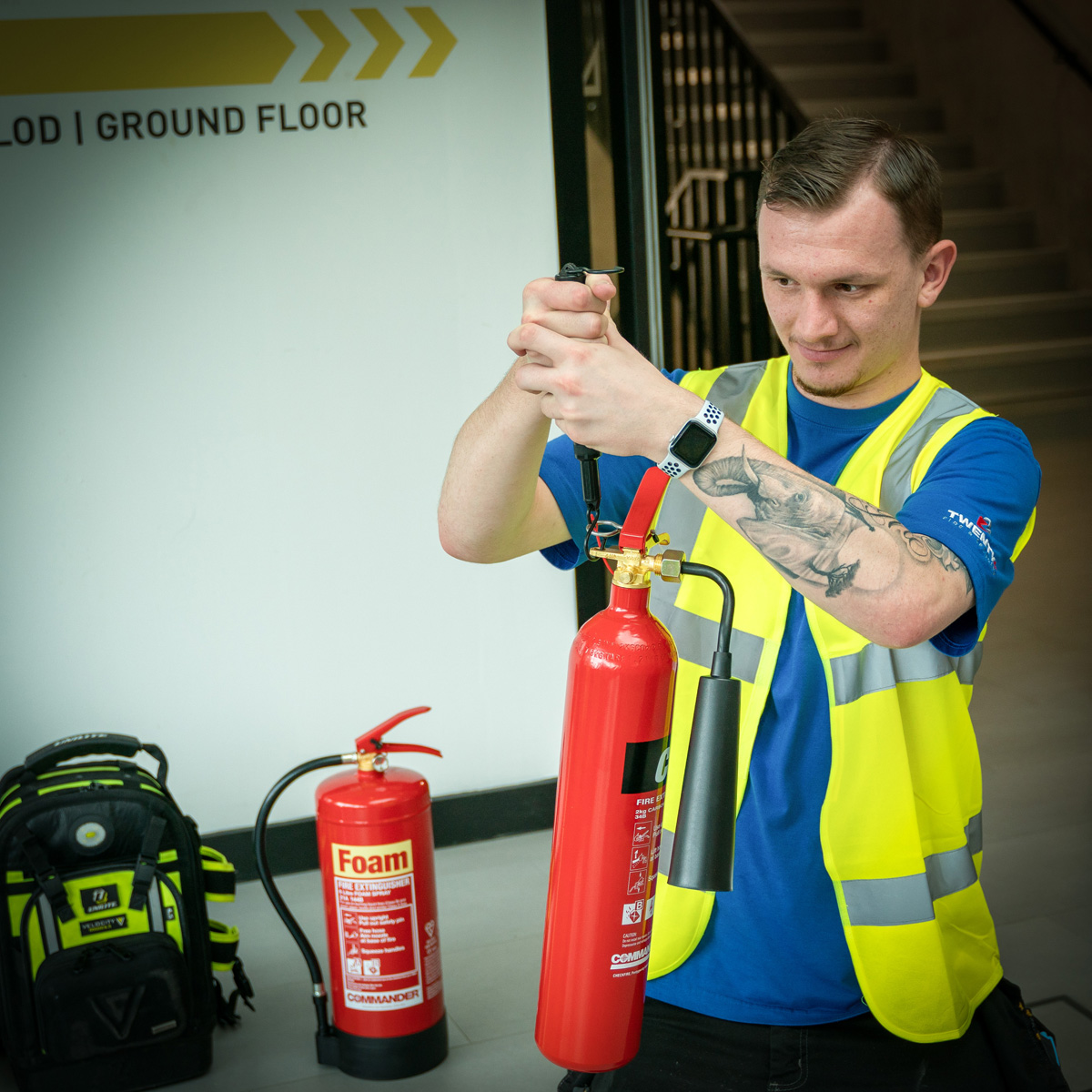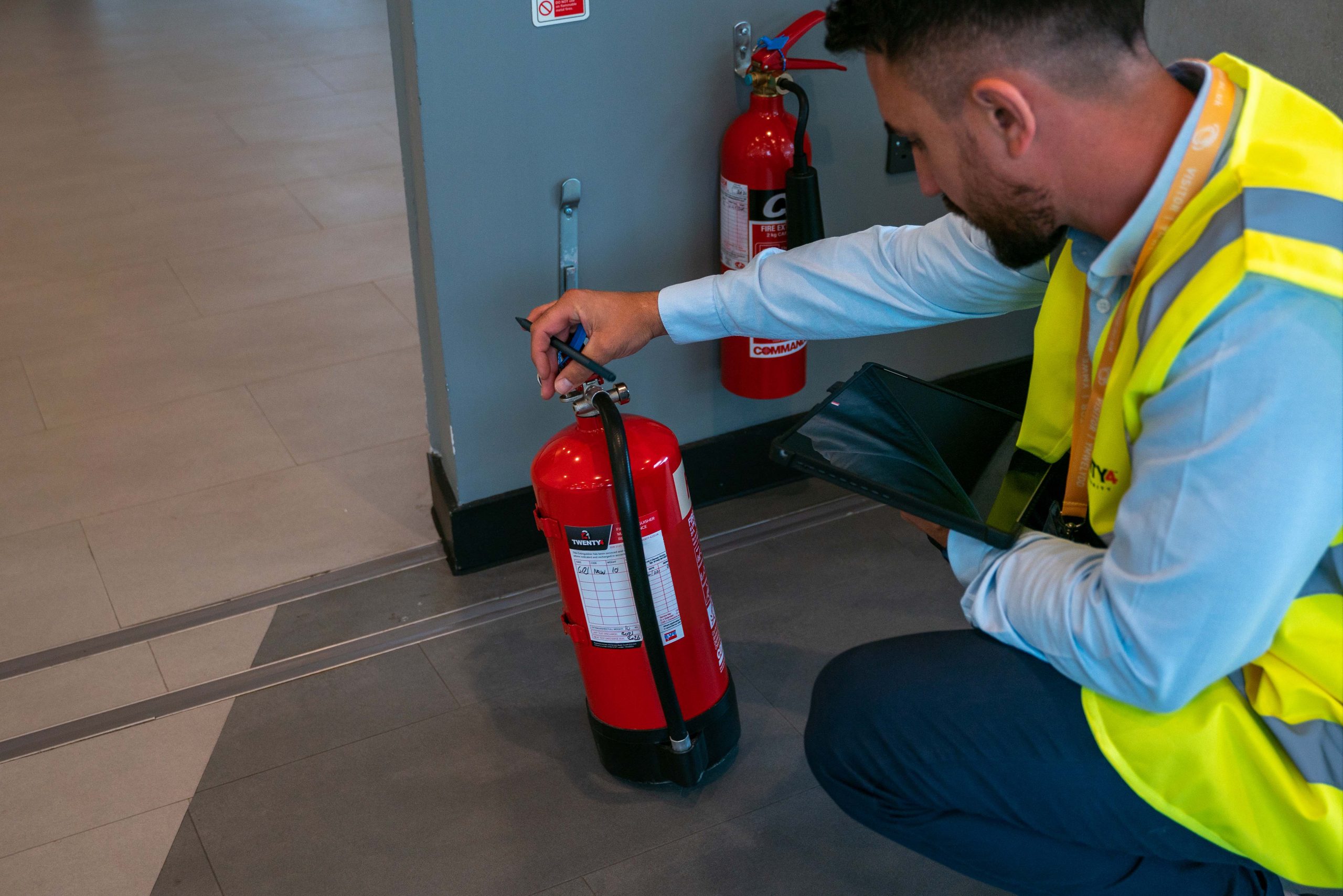Understanding the proper use of fire extinguishers is crucial for ensuring safety in the workplace. For UK businesses, this not only helps in safeguarding employees but also complies with legal responsibilities regarding fire safety. This blog explores when and how to use fire extinguishers effectively and legally in the workplace.
1. Know Your Legal Obligations
In the UK, the Regulatory Reform (Fire Safety) Order 2005 applies to all non-domestic premises, including workplaces. This legislation requires the responsible person (usually the employer or premises owner) to ensure proper fire safety measures are in place. This includes adequate provision of fire extinguishers and ensuring all staff are trained in their correct use.
2. Identify the Types of Fire Extinguishers
Different types of fire extinguishers are designed to tackle different types of fires:
- Water extinguishers are used for solid combustibles like paper, wood, and textiles.
- Foam extinguishers work well on solids and liquids, such as petrol and paints.
- CO2 extinguishers are ideal for electrical fires and flammable liquids.
- Dry powder extinguishers can be used on most fires, including flammable gases.
- Wet chemical extinguishers are designed specifically for cooking oil or fat fires.
The placement and accessibility of these extinguishers are dictated by the risks present in specific areas of a workplace.
3. When to Use a Fire Extinguisher
Fire extinguishers are critical during the initial stages of a fire, known as the ‘incipient’ phase. Here’s when to use a fire extinguisher:
- Immediate availability: The fire is discovered while still small and manageable.
- Safe distance: You can fight the fire with your back towards a safe escape route.
- Correct extinguisher: The fire extinguisher type matches the class of fire.
- Training and confidence: You are trained and confident in the use of the extinguisher.
4. Training Employees
Training is a legal requirement and essential for ensuring safety. Training should cover:
- How to identify different types of fire extinguishers.
- When and how to safely use them.
- Practical use through controlled training scenarios.
5. Conduct Regular Checks and Maintenance
UK businesses must ensure that fire extinguishers are maintained in a fully functional state and serviced annually by a competent person. Checks often include ensuring the extinguisher is not blocked by equipment, the pressure is at the recommended level, and it has no visible signs of wear or damage.
6. Know When NOT to Use a Fire Extinguisher
Understanding when not to engage is just as important for safety. Avoid using a fire extinguisher if:
- The fire is too large or out of control.
- The correct type of extinguisher is not available.
- You have not been trained or are unsure of how to use it safely.
In these cases, the best course of action is to evacuate the area immediately and call the fire brigade.
Incorporating fire extinguisher training into workplace safety protocols is not just about compliance; it’s about creating a safer environment for everyone. By understanding when and how to use fire extinguishers, UK businesses can significantly enhance their fire safety practices. Remember, the priority is always to safeguard life over property; never put yourself or others at risk.
For more detailed guidance, contact us at Twenty4 Fire and Security.

